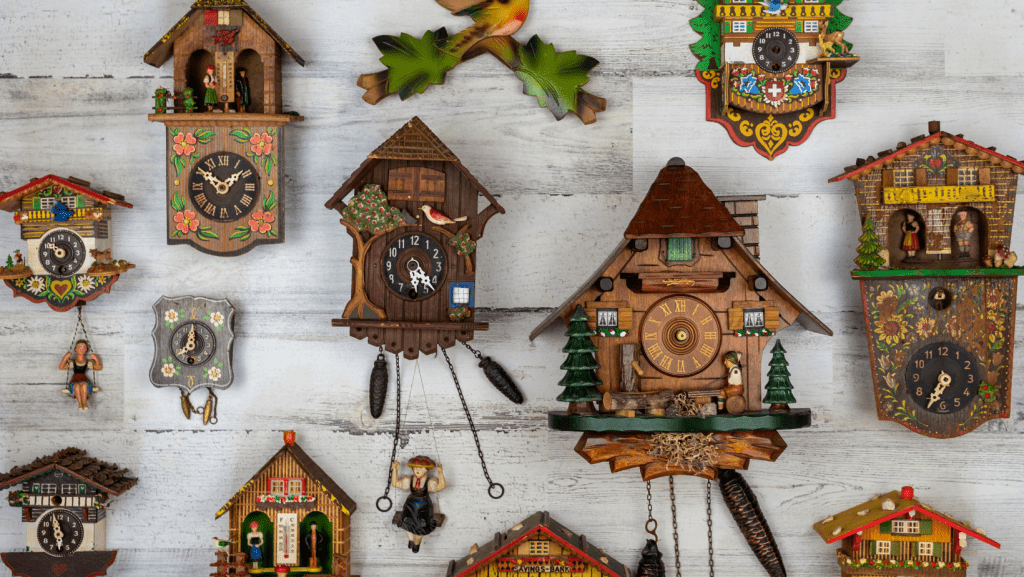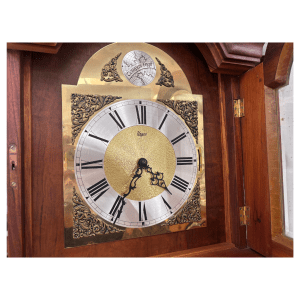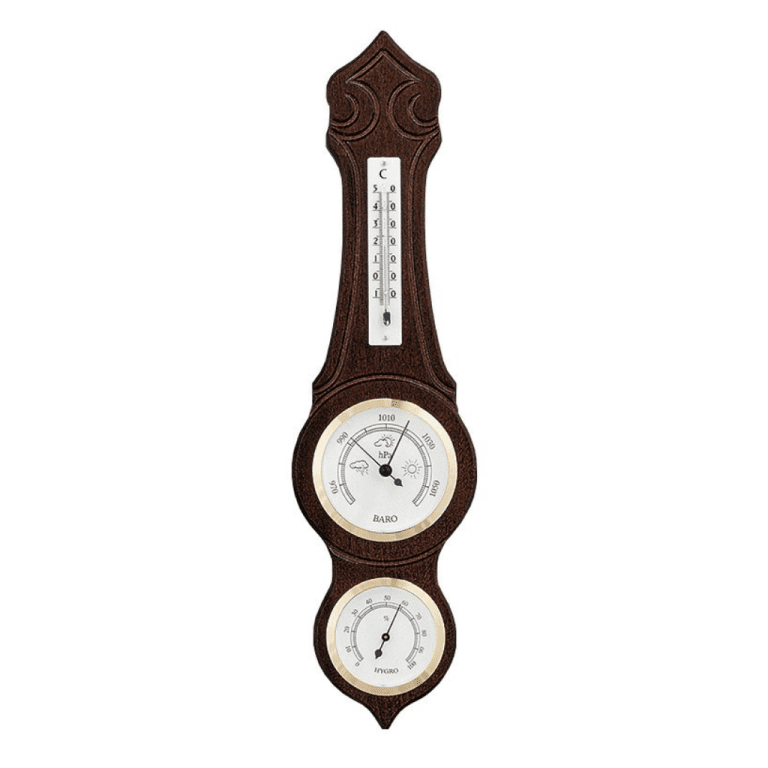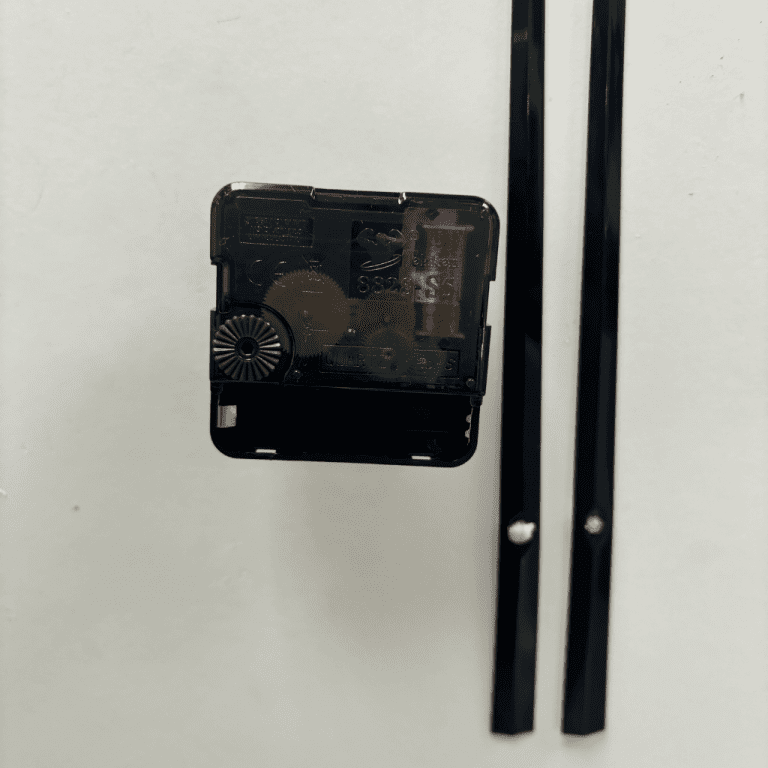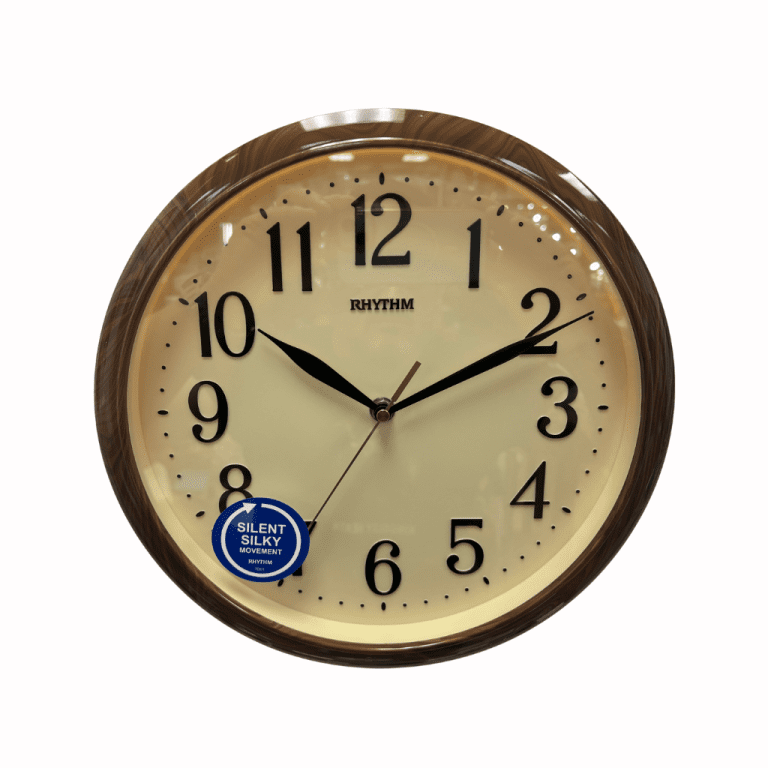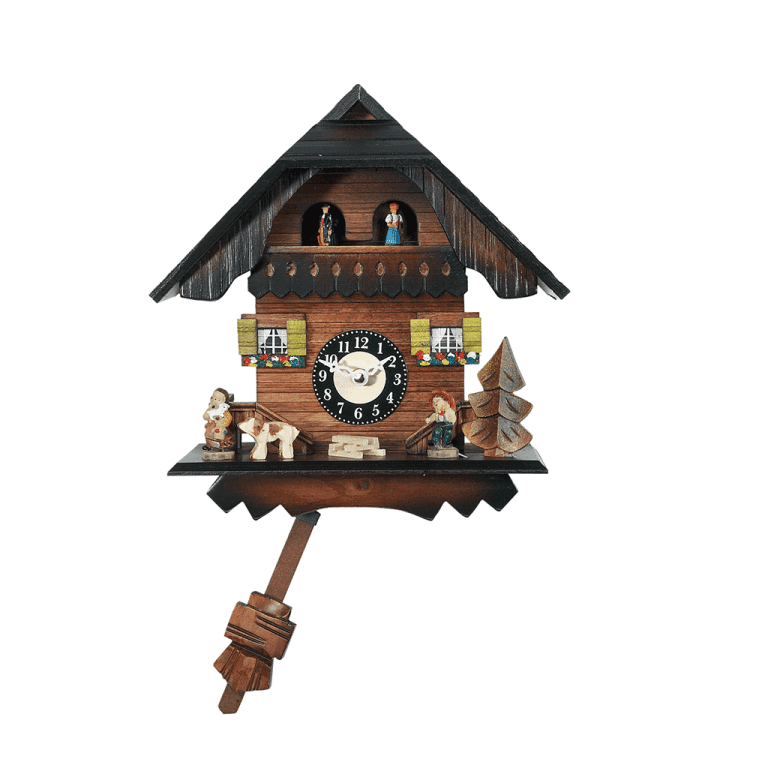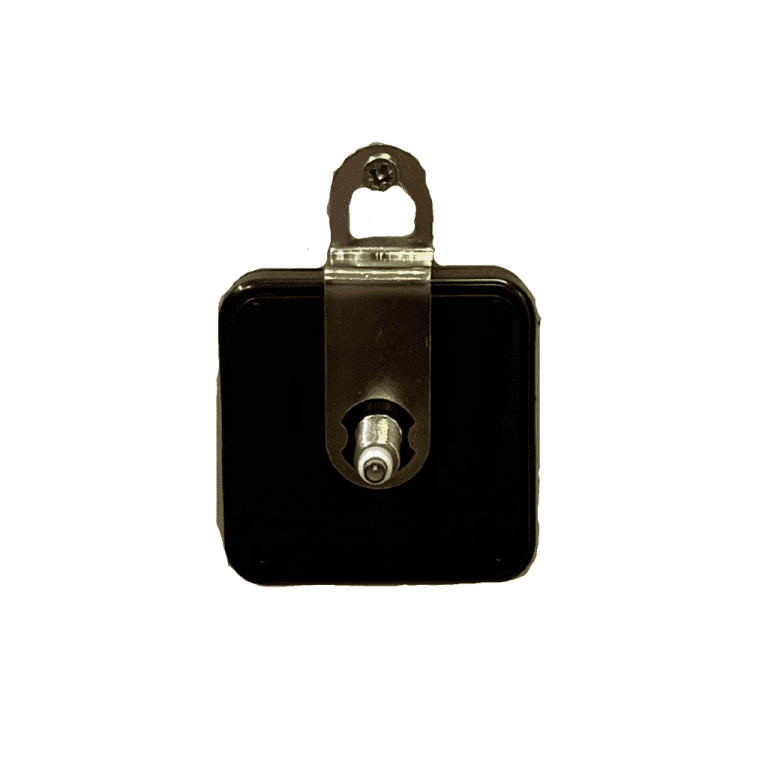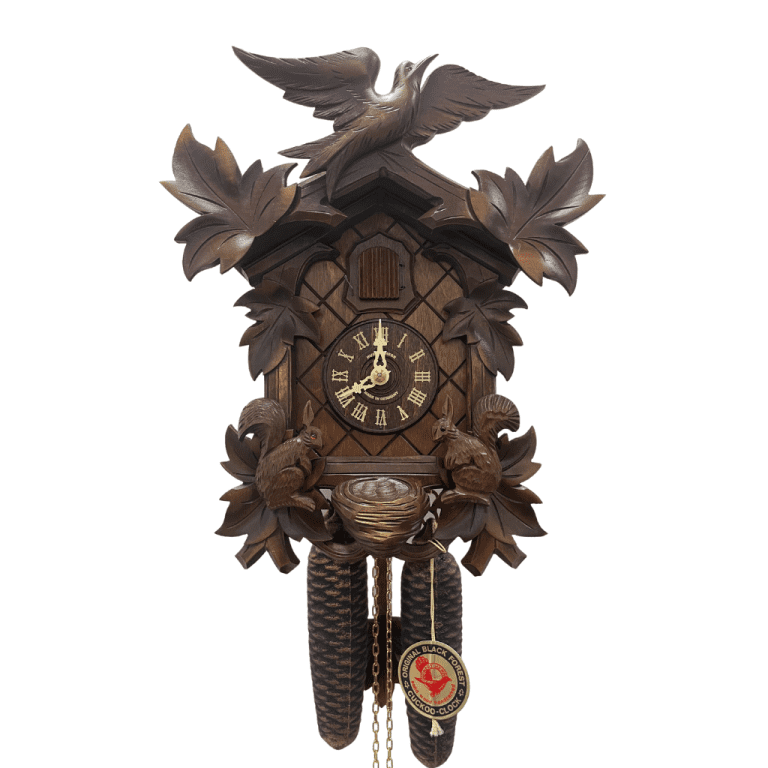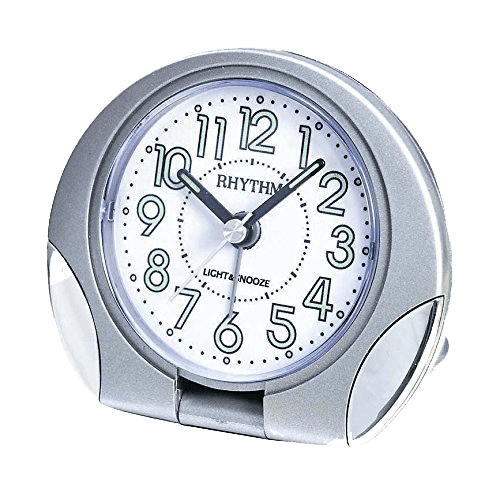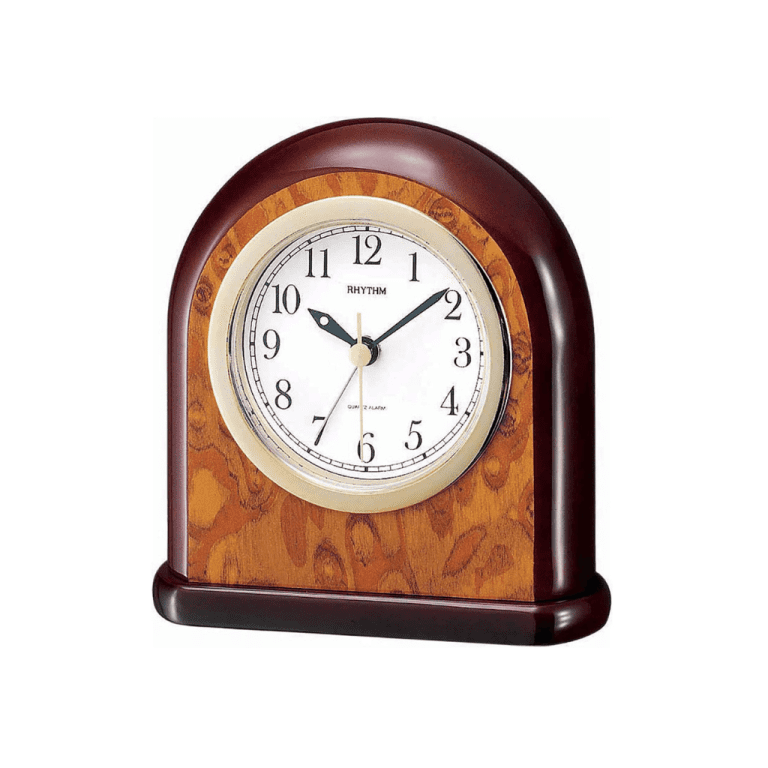Everyone recognizes the distinctive presence of the cuckoo clock: the beautiful artwork, the moving parts, the little peek-a-boo bird every hour on the hour. Long before the cuckoo clock became a familiar favorite of people all over the world, it was first created in Eastern Germany, in what was then known as Bohemia. Despite the centuries since its creation in the 1740’s, the actual construction and mechanics of the cuckoo clock has changed little. An authentic cuckoo clock is weight-driven (though some models did use springs), and the unique sound of the cuckoo is made by bellows forcing air through small pipes on the hour.
Despite its seemingly straightforward history, the cuckoo clock, like so many regional specialties, has origins shrouded in uncertainty. Unlike many other types of clock that can be contributed to a particular person or company of inventors, the “first” cuckoo clock is attributed to dozens of German clockmakers in the 1740’s and 50’s. In the end, no one knows for sure (or at least haven’t been able to prove they know for sure), and all we can say with certainty is that in the middle of the 18th century, cuckoo clocks began showing up in abundance in the Black Forest area, and were soon being made and traded all over Europe.
Whatever origin story or first creator you like best, there’s no denying that the cuckoo clock has always been a mark of regional pride and possessiveness for the Black Forest region of Germany, and rightly so. The traditional painted Schilduhr (shield-clock) was the common style for early cuckoo clocks, but they eventually grew into intricate pieces of hand carved and painted art on their own. In 1850, the Grand Duchy of Baden clockworks school held a cuckoo design competition; similar designs to those of the winner, Friedrich Eisenlohr (an architect who based his clock on the railway houses he designed) can still be found on many clocks today.
Credited to:ticktockshop

